 W
WListed here are the ethnic groups of Canadian residents as self-identified in the 2016 census in which approximately 35,151,000 census forms were completed). The relevant census question asked for "the ethnic or cultural origins" of the respondent's ancestors and not the respondents themselves.
 W
W"Cultural mosaic" is the mix of ethnic groups, languages, and cultures that coexist within society. The idea of a cultural mosaic is intended to suggest a form of multiculturalism, different from other systems such as the melting pot, which is often used to describe nations like the United States' assimilation.
 W
WThe Acadians are the descendants of the French who settled in Acadia during the 17th and 18th centuries.
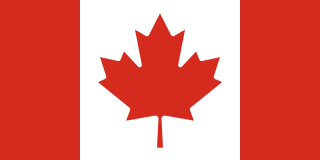 W
WAmerican Canadians are Canadians of American descent. The term is most often used to refer to Canadians who migrated from or have ancestry from the United States.
 W
WThe Amish are a group of traditionalist Christian church fellowships with Swiss German and Alsatian Anabaptist origins. They are closely related to Mennonite churches. The Amish are known for simple living, plain dress, Christian pacifism, and slowness to adopt many conveniences of modern technology, with a view neither to interrupt family time, nor replace face-to-face conversations whenever possible, and a view to maintain self-sufficiency. The Amish value rural life, manual labor, humility, and Gelassenheit, all under the auspices of living what they interpret to be God's word.
 W
WAnglo-Americans are people who are English-speaking inhabitants of Anglo-America. It typically refers to the nations and ethnic groups in the Americas that speak English as a native language who comprise the majority of people who speak English as a first language. This usage originated in the discussion of the history of English-speaking people of the United States and the Spanish-speaking people residing in the western United States during the Mexican–American War.
 W
WAsian Canadians are Canadians who can trace their ancestry back to the continent of Asia or Asian people. Canadians with Asian ancestry comprise both the largest and fastest growing group in Canada, after European Canadians, with roughly 17.7% of the Canadian population. Most Asian Canadians are concentrated in the urban areas of Southern Ontario, Southwestern British Columbia, Central Alberta, and other large Canadian cities.
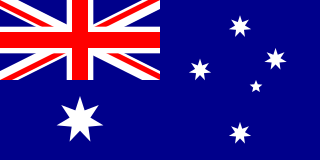 W
WAustralian Canadians are Canadian citizens or residents with Australian ancestry. There are three groups of Australian Canadians, including Australian immigrants to Canada, descendants of Australian immigrants to Canada, and Australian expatriates residing in Canada. According to the 2016 Census, there were 42,315 Canadians who claimed full or partial Australian ancestry. Historically, most Australian Canadians lived in the western provinces of Canada, however in 2016, the most popular cities for Australian immigrants are Vancouver and Toronto. While the number of Australian Canadians is quite low relative to other countries, the number of Australians on working visas in Canada is extremely high.
 W
WBlack Canadians are people of full or partial sub-Saharan African descent who are citizens or permanent residents of Canada. The majority of Black Canadians are of Caribbean origin, though the Black Canadian population also consists of African-American immigrants and their descendants and many native African immigrants.
 W
WBlack Canadians migrated north in the 18th and 19th centuries from the United States, many of them through the Underground Railroad, into Southwestern Ontario, Toronto, and Owen Sound. Black Canadians fought in the War of 1812 and Rebellions of 1837–1838 for the British. Some returned to the United States during the American Civil War or during the Reconstruction era.
 W
WBulgarian Canadians are Canadian citizens or residents from Bulgaria or people of Bulgarian descent. According to the 2016 Census there were 34,560 Canadians who claimed Bulgarian ancestry, an increase compared to the 27,260 of the 2006 Census.
 W
WCanadians are people identified with the country of Canada. This connection may be residential, legal, historical or cultural. For most Canadians, many of these connections exist and are collectively the source of their being Canadian.
 W
WChinese Canadians are Canadians of full or partial Chinese ancestry which includes Canadian-born Chinese. They comprise a subgroup of East Asian Canadians which is a further subgroup of Asian Canadians. Demographic research tends to include immigrants from Mainland China, Hong Kong, and Macau, as well as overseas Chinese who have immigrated from Southeast Asia and South America into the broadly defined Chinese Canadian category.
 W
WDominican Canadians are Canadian citizens of Dominican descent or Dominican Republic-born people who reside in Canada. According to the 2016 census, there were 23,130 Canadians who claimed full or partial Dominican ancestry.
 W
WDutch Canadians are Canadians with full or partial Dutch ancestry. According to the Canada 2006 Census, there were 1,035,965 Canadians of Dutch descent, including those of full or partial ancestry. This increased to 1,111,655 in 2016.
 W
WEnglish Canadians, or Anglo-Canadians, refers to either Canadians of English ethnic origin and heritage or to English-speaking or Anglophone Canadians of any ethnic origin; it is used primarily in contrast with French Canadians. Canada is an officially bilingual country, with English and French official language communities. Immigrant cultural groups ostensibly integrate into one or both of these communities, but often retain elements of their original cultures. The term English-speaking Canadian is sometimes used interchangeably with English Canadian.
 W
WFilipino Canadians are Canadians of Filipino descent. Filipino Canadians are the fourth largest subgroup of the overseas Filipinos and one of the fastest-growing groups in Canada.
 W
WFranco-Manitobans are French Canadians or Canadian francophones living in the province of Manitoba. According to the 2016 Canadian Census, 40,975 residents of the province stated that French was their mother tongue. In the same census, 148,810 Manitobans claimed to have either full or partial French ancestry. There are several Franco-Manitoban communities throughout Manitoba, although the majority are based in either the Winnipeg Capital Region or the Eastman Region.
 W
WFranco-Ténois, originating from the acronym TNO, the French term for the Northwest Territories of Canada, refers to the widespread community of francophones who reside in the Northwest Territories.
 W
WFransaskois, , Franco-Saskatchewanais (Franco-Saskatchewannais) or Franco-Saskatchewanians are French Canadians or Canadian francophones living in the province of Saskatchewan. According to the 2016 Canadian Census, approximately 17,735 residents of the province stated that French was their mother tongue. In the same census, 125,810 Saskatchewanians claimed full or partial French ancestry. There are several Fransaskois communities in Saskatchewan, although the majority of francophones in Saskatchewan reside in the province's three largest cities, Saskatoon, Regina, and Prince Albert.
 W
WFrench Canadians are an ethnic group who trace their ancestry to French colonists who settled in Canada beginning in the 17th century.
 W
WThe Gaels are an ethnolinguistic group native to Ireland, Scotland and the Isle of Man in northwestern Europe. They are associated with the Gaelic languages: a branch of the Celtic languages comprising Irish, Manx and Scottish Gaelic.
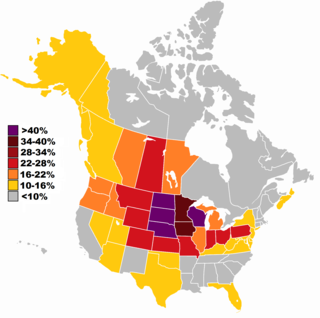 W
WGerman Canadians are Canadian citizens of German ancestry or Germans who emigrated to and reside in Canada. According to the 2016 census, there are 3,322,405 Canadians with full or partial German ancestry. Some immigrants came from what is today Germany, while larger numbers came from German settlements in Eastern Europe and Imperial Russia; others came from parts of the German Confederation, Austria-Hungary and Switzerland.
 W
WHaiti has a sizeable diaspora, present majoritarily in the United States, Dominican Republic, Cuba, Canada, France, the Bahamas, Brazil and Chile. They also live in other countries like Belgium, Turks and Caicos, Mexico, Puerto Rico, and the U.S. Virgin Islands, among others.
 W
WThe Innu / Ilnu or Innut / Innuat / Ilnuatsh ("people"), formerly called Montagnais from the French colonial period, are the Indigenous inhabitants of territory in the northeastern portion of the present-day province of Quebec and some eastern portions of Labrador. They refer to their traditional homeland as Nitassinan or Innu-assi.
 W
WThe Inuit are a group of culturally similar indigenous peoples inhabiting the Arctic regions of Greenland, Canada, and Alaska. The Inuit languages are part of the Eskimo–Aleut languages also known as Inuit-Yupik-Unangan and also as Eskaleut. Inuit Sign Language is a critically endangered language isolate used in Nunavut.
 W
WIrish Canadians are Canadian citizens who have full or partial Irish heritage including descendants who trace their ancestry to immigrants who originated in Ireland. 1.2 million Irish immigrants arrived from 1825 to 1970, and at least half of those in the period from 1831 to 1850. By 1867, they were the second largest ethnic group, and comprised 24% of Canada's population. The 1931 national census counted 1,230,000 Canadians of Irish descent, half of whom lived in Ontario. About one-third were Catholic in 1931 and two-thirds Protestant.
 W
WItalian Canadians comprise Canadians who have full or partial Italian heritage and Italians who migrated from Italy or reside in Canada. According to the 2016 Census of Canada, 1,587,970 Canadians claimed full or partial Italian ancestry. The census enumerates the entire Canadian population, which consists of Canadian citizens, landed immigrants and non-permanent residents and their families living with them in Canada. Residing mainly in central urban industrial metropolitan areas, Italian Canadians are the seventh largest self-identified ethnic group in Canada behind French, English, Irish, Scottish, German and Chinese Canadians.
 W
WKurdish Canadians refers to people of Kurdish origin who are born in or living in Canada.
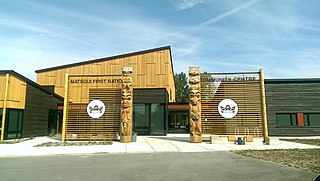 W
WThe Matsqui people are a Sto:lo Aboriginal group located in the Central Fraser Valley region of British Columbia, Canada. Their band government is the Matsqui First Nation, a member of the Sto:lo Nation tribal council. The core traditional territory of the Matsqui stretches along the Fraser River from Crescent Island to Sumas Mountain, and southward beyond the Canada-United States border. Today the band administers four reserves and has a population of 225.
 W
WThe Métis are Indigenous peoples in the three Prairie Provinces, as well as parts of Ontario, British Columbia, the Northwest Territories, and the Northern United States. They have a shared history and culture and are of mixed Indigenous and White ancestry which became a distinct group through ethnogenesis by the mid-18th century, during the fur trade era.
 W
WMexican Canadians are Canadian citizens of Mexican origin, either through birth or ethnicity, who reside in Canada. According to the National Household Survey in 2011, 96,055 Canadians indicated that they were of full or partial Mexican ancestry . Those born in Mexico are the largest subgroup of Latin American Canadians. Mexico-related Canadians trace their origins to Mexico, a country located in North America, bounded south from the United States. Some originate ethnically from many European countries, especially Spain, its colonial ruler for over three centuries. Canada contains the second largest population of Mexican-origin people outside of Mexico, second to the United States which has a Mexican-origin population of over 37 million.
 W
WThe Miꞌkmaq are a First Nations people of the Northeastern Woodlands, indigenous to the areas now known as Canada's Atlantic Provinces and the Gaspé Peninsula of Quebec as well as the northeastern region of Maine. They call their national territory Miꞌkmaꞌki. The nation has a population of about 170,000, of whom nearly 11,000 speak Miꞌkmaq, an Eastern Algonquian language. Once written in Miꞌkmaw hieroglyphic writing, it is now written using most letters of the Latin alphabet.
 W
WMoroccan Canadians are Canadians of full or partial Moroccan descent, as well as people from the state of Morocco who are ethno-linguistic and religious minorities. According to the 2011 Census, there were 71,910 Canadians who claimed full or partial Moroccan ancestry, an increase compared to the 2006 Census. A large minority of Moroccan Canadians, comprising 27,000 people, are Moroccan Jews.
 W
WNewfoundland and Labrador is the easternmost province of Canada, in the country's Atlantic region. It is composed of the island of Newfoundland and the continental region of Labrador to the northwest, with a combined area of 405,212 square kilometres (156,500 sq mi). In 2018, the province's population was estimated at 525,073. About 94% of the province's population lives on the island of Newfoundland, of whom more than half live on the Avalon Peninsula.
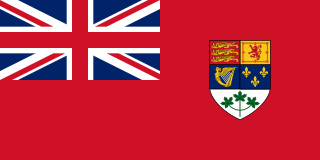 W
WOld Stock Canadians is a term referring to European Canadians whose family has lived in Canada for several generations. It is used by some to refer exclusively to anglophone Canadians with British immigrant ancestors, but it usually refers to either anglophone or francophone Canadians as parallel old stock groups. Francophone Canadians descended from early French immigrants in New France are sometimes referred to as Québécois pure laine, often translated as "dyed in the wool", but with the same connotation as old stock.
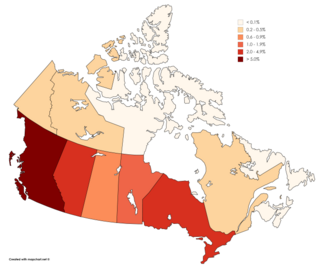 W
WPunjabi Canadians number nearly 700,000 and account for roughly 2% of Canada's population. Their heritage originates wholly or partly in the Punjab, a region in northern South Asia, encompassing India and Pakistan.
 W
WPolish Canadians are citizens of Canada with Polish ancestry, and Poles who immigrated to Canada from abroad. At the 2016 Census, there were 1,106,585 Canadians who claimed full or partial Polish heritage.
 W
WRacialization of labour in the Okanagan refers to the growing relationship between particular racial identities and agricultural labour in the Okanagan Valley of British Columbia. In brief, the continued growth and operation of the agricultural industry in the Okanagan evidently depends on the employment of temporary migrant workers. In 2009, there were 3,000 Mexican migrant labourers working in the Okanagan.
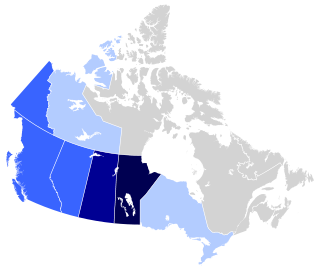 W
WRussian Canadians comprise Canadian citizens of Russian heritage or Russians who emigrated to and reside in Canada. According to the 2016 Census, there were 622,445 Canadians who claimed full or partial Russian ancestry. The areas of Canada with the highest percentage population of Russian Canadians are the Prairie Provinces.
 W
WScottish Canadians are people of Scottish descent or heritage living in Canada. As the third-largest ethnic group in Canada and amongst the first Europeans to settle in the country, Scottish people have made a large impact on Canadian culture since colonial times. According to the 2016 Census of Canada, the number of Canadians claiming full or partial Scottish descent is 4,799,010, or 13.93% of the nation's total population. However, some demographers have estimated that the number of Scottish Canadians could be up to 25% of the Canadian population. Prince Edward Island has the highest population of Scottish descendants at 41%.
 W
WSephardi Jews, also known as Sephardic Jews, Sephardim, or Hispanic Jews by modern scholars, are a Jewish ethnic division originating from traditionally established communities in the Iberian Peninsula. The term "Sephardim" also sometimes refers to Mizrahi Jews of Western Asia and North Africa. Although most of this latter group do not have ancestry from the Jewish communities of Iberia, the majority of them were influenced by the Sephardic style of liturgy and Sephardic law and customs from the influence of Moshe ben Maimon, and then later the Iberian Jewish exiles over the course of the last few centuries. This article deals with Sephardim within the narrower ethnic definition.
 W
WThe community of Serbian Canadians includes Canadian citizens of Serb ethnicity, or people born in Serbia who permanently reside in Canada. Serbs have migrated to Canada in various waves during the 20th century. Today there are five or more generations of Serbs in the country. The 2016 census recorded 96,530 people in Canada declaring themselves as "Serbian"who belong to the Serbian Orthodox Church and follow the Eastern Orthodox tradition established by Constantine the Great as a state religion in the fourth century. The recent Serbian immigrants to come to Canada were from all parts of Croatia, Bosnia-Herzegovina, Montenegro, North Macedonia, Slovenia, Romania.
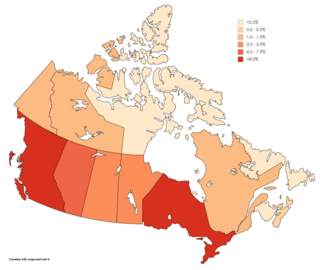 W
WSouth Asian Canadians are Canadians who were either born in or can trace their ancestry to South Asia, which includes the nations of Afghanistan, India, Pakistan, Bangladesh, Sri Lanka, Bhutan, Nepal and the Maldives.
 W
WTamil Canadians, or Canadian Tamils, are Canadians of Tamil ethnic origin. Much of Canada's Tamil diaspora from India and Sri Lanka then majority consist of Sri Lankan Tamil refugees who sought to flee the ethnic tensions during the Sri Lankan Civil War between the 1970s and 2000s, while economic Tamil migrants also originate from India, Singapore and other parts of South Asia. From a population of fewer than 150 Tamils in 1983, it has become one of the largest visible minority population groups within the Greater Toronto Area. In the 1991 census, Tamils were the fastest-growing ethnic group in the city.
 W
WTurkish Canadians, also called Canadian Turks, are Canadian citizens of Turkish descent. The majority of Canadian Turks descend from the Republic of Turkey; however, there has also been significant Turkish migration from other post-Ottoman modern nation-states including ethnic Turkish communities which have come to Canada from the Balkans, the island of Cyprus, as well as other parts of the Levant, and North Africa.
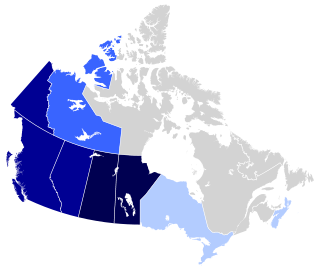 W
WUkrainian Canadians are Canadian citizens of Ukrainian descent or Ukrainian-born people who immigrated to Canada. In 2016, there were an estimated 1,359,655 persons of full or partial Ukrainian origin residing in Canada, making them Canada's eleventh largest ethnic group and giving Canada the world's third-largest Ukrainian population behind Ukraine itself and Russia. Self-identified Ukrainians are the plurality in several rural areas of Western Canada. According to the 2011 census, of the 1,251,170 who identified as Ukrainian, only 144,260 could speak the Ukrainian language.
 W
WVietnamese Canadians are Canadian citizens of Vietnamese ancestry. As of 2016, there are 240,615 Vietnamese Canadians, most of whom reside in the provinces of Ontario, British Columbia, Alberta, and Quebec.
 W
WWest Asian Canadians, officially known as West Central Asian and Middle Eastern Canadians are Canadians with ancestry, origins, or citizenship from West and Central Asia. The term West Asian Canadian is a subgroup of Asian Canadians and Middle Eastern Canadians. According to Statistics Canada, West Asian Canadians are considered visible minorities and can be further divided by nationality, such as Iranian Canadian or Lebanese Canadian.
 W
WYoruba Canadians are Canadians of Yoruba descent. The Yoruba people are an ethnic group of southwestern Nigeria and southern Benin in West Africa. They represent the largest ethnic community of Nigerians in Canada. According to the 2016 Canadian census by Statistics Canada, 16,210 respondents spoke Yoruba at home. But exact population estimates for Yoruba-Canadians are most likely far greater, because many would have simply identified as Nigerian or Beninese only or reported just English as home language. The earliest Yoruba settlers in Canada were descendants of slaves transported to North America, Latin America and the Caribbean through the Atlantic slave trade. This resulted in a sizable proportion of Yoruba Canadians descending from African American slaves while recent migrants come directly from West Africa.